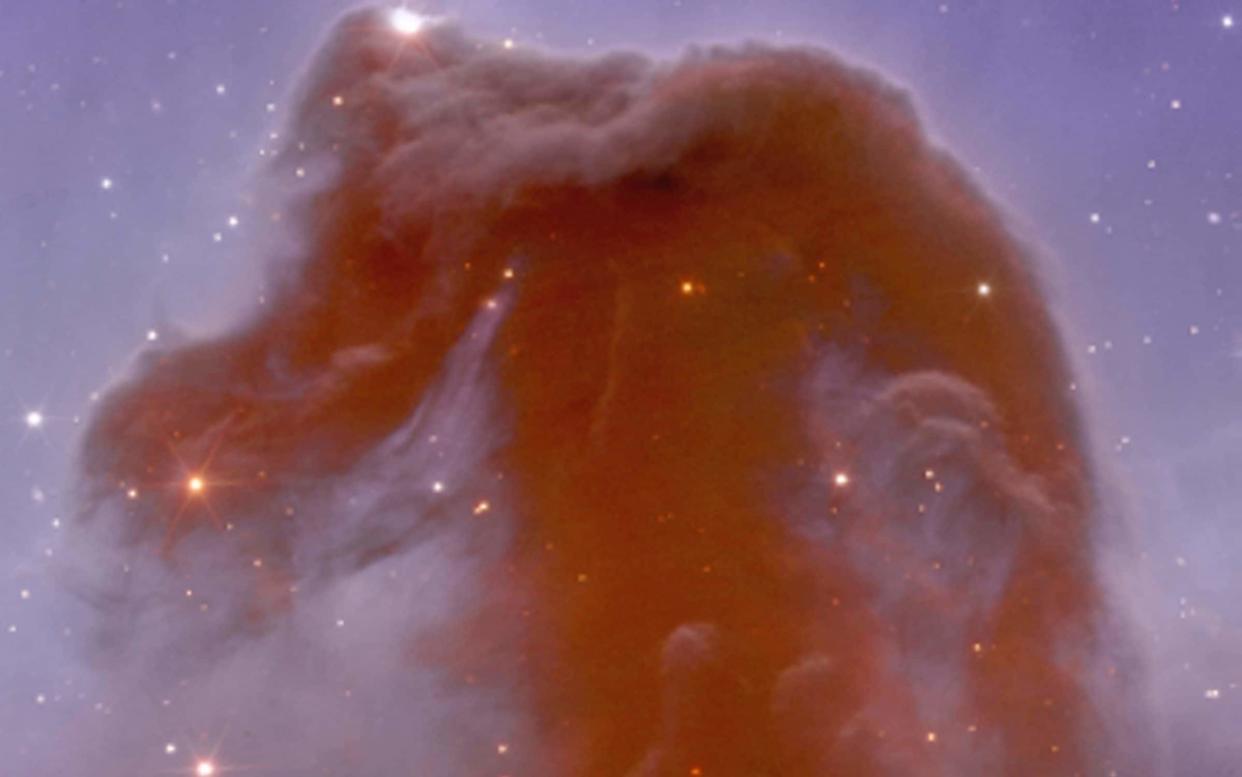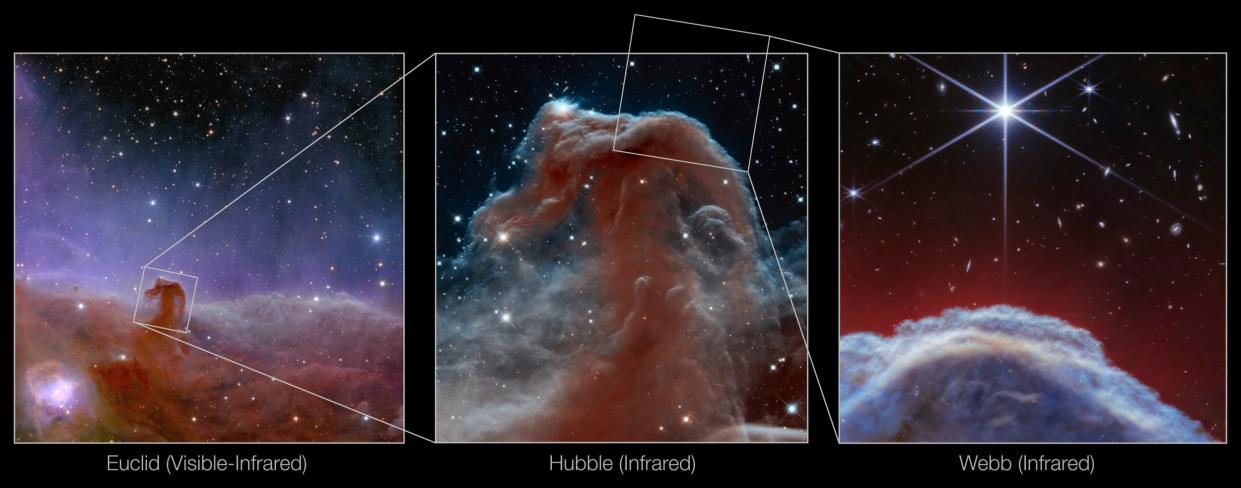Pictured: Sharpest images yet of Orion’s Horsehead Nebula

The James Webb space telescope has captured the sharpest infrared images to date of the Horsehead Nebula, one of the most distinctive objects in the sky.
Nasa’s new images show a section of the constellation Orion, or The Hunter. Rising from turbulent waves of dust and gas is the equine-shaped nebula, otherwise known as Barnard 33, which resides roughly 1,300 light years away.
The nebula formed from a collapsing interstellar cloud of material, and glows because it is illuminated by a nearby hot star. The gas clouds surrounding the Horsehead have already dissipated, but the jutting pillar is made of thick clumps of material that is harder to erode.

Astronomers estimate that the Horsehead has about five million years left before it too disintegrates. Webb’s new view focuses on the illuminated edge of the top of the nebula’s distinctive dust and gas structure.
The nebula is described as a photodissociation region, or PDR. In such a region ultraviolet (UV) light from young, massive stars creates a mostly neutral, warm area of gas and dust between the fully ionised gas surrounding the massive stars and the clouds in which they are born.
This UV radiation strongly influences the gas chemistry of these regions and acts as the most important source of heat.
Next, astronomers intend to study the spectroscopic data that have been obtained of the nebula to evidence the evolution of the physical and chemical properties of the material observed across the nebula.


